Volume 11, Issue 4
Displaying 1-22 of 22 articles from this issue
- |<
- <
- 1
- >
- >|
-
1991 Volume 11 Issue 4 Pages 377-387
Published: July 15, 1991
Released on J-STAGE: December 11, 2008
Download PDF (1343K) -
1991 Volume 11 Issue 4 Pages 388-398
Published: July 15, 1991
Released on J-STAGE: December 11, 2008
Download PDF (1294K) -
1991 Volume 11 Issue 4 Pages 399-401
Published: July 15, 1991
Released on J-STAGE: December 11, 2008
Download PDF (267K) -
1991 Volume 11 Issue 4 Pages 402-407
Published: July 15, 1991
Released on J-STAGE: December 11, 2008
Download PDF (591K) -
1991 Volume 11 Issue 4 Pages 408
Published: July 15, 1991
Released on J-STAGE: December 11, 2008
Download PDF (73K) -
1991 Volume 11 Issue 4 Pages 409-413
Published: July 15, 1991
Released on J-STAGE: December 11, 2008
Download PDF (702K) -
1991 Volume 11 Issue 4 Pages 414-419
Published: July 15, 1991
Released on J-STAGE: December 11, 2008
Download PDF (659K) -
1991 Volume 11 Issue 4 Pages 420-426
Published: July 15, 1991
Released on J-STAGE: December 11, 2008
Download PDF (724K) -
1991 Volume 11 Issue 4 Pages 427-429
Published: July 15, 1991
Released on J-STAGE: December 11, 2008
Download PDF (309K) -
1991 Volume 11 Issue 4 Pages 430-432
Published: July 15, 1991
Released on J-STAGE: December 11, 2008
Download PDF (283K) -
1991 Volume 11 Issue 4 Pages 433-443
Published: July 15, 1991
Released on J-STAGE: December 11, 2008
Download PDF (1076K) -
1991 Volume 11 Issue 4 Pages 444-450
Published: July 15, 1991
Released on J-STAGE: December 11, 2008
Download PDF (664K) -
1991 Volume 11 Issue 4 Pages 451-454
Published: July 15, 1991
Released on J-STAGE: December 11, 2008
Download PDF (436K) -
1991 Volume 11 Issue 4 Pages 455-458
Published: July 15, 1991
Released on J-STAGE: December 11, 2008
Download PDF (471K) -
1991 Volume 11 Issue 4 Pages 459-465
Published: July 15, 1991
Released on J-STAGE: December 11, 2008
Download PDF (790K) -
1991 Volume 11 Issue 4 Pages 466-470
Published: July 15, 1991
Released on J-STAGE: December 11, 2008
Download PDF (528K) -
1991 Volume 11 Issue 4 Pages 471-479
Published: July 15, 1991
Released on J-STAGE: December 11, 2008
Download PDF (674K) -
1991 Volume 11 Issue 4 Pages 477-482
Published: July 15, 1991
Released on J-STAGE: December 11, 2008
Download PDF (580K) -
1991 Volume 11 Issue 4 Pages 483-487
Published: July 15, 1991
Released on J-STAGE: December 11, 2008
Download PDF (560K) -
1991 Volume 11 Issue 4 Pages 488-491
Published: July 15, 1991
Released on J-STAGE: December 11, 2008
Download PDF (497K) -
1991 Volume 11 Issue 4 Pages 492-495
Published: July 15, 1991
Released on J-STAGE: December 11, 2008
Download PDF (855K) -
1991 Volume 11 Issue 4 Pages 496-499
Published: July 15, 1991
Released on J-STAGE: December 11, 2008
Download PDF (502K)
- |<
- <
- 1
- >
- >|
